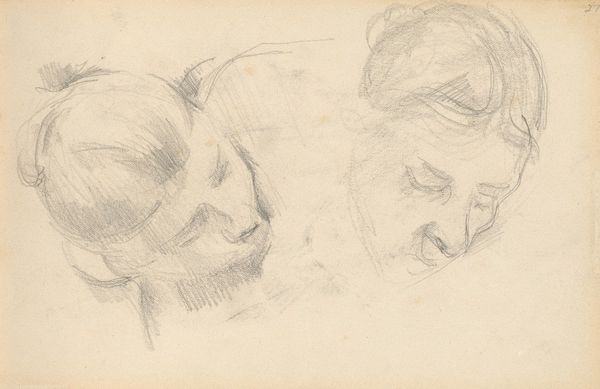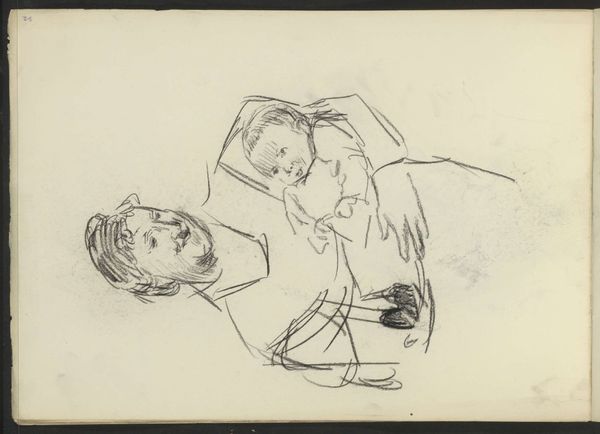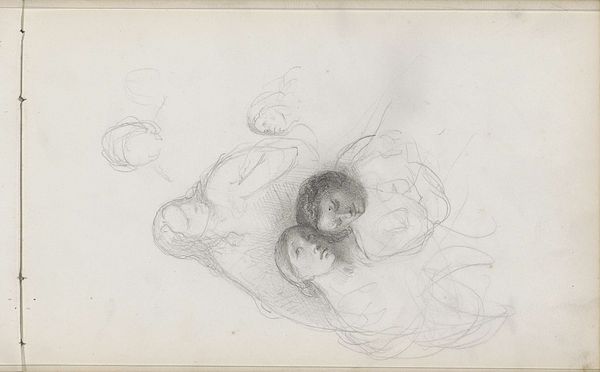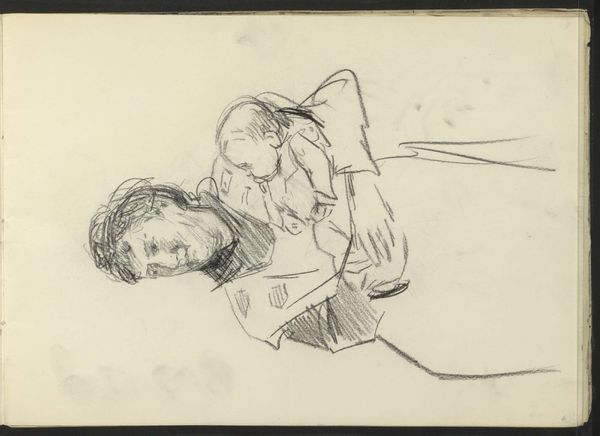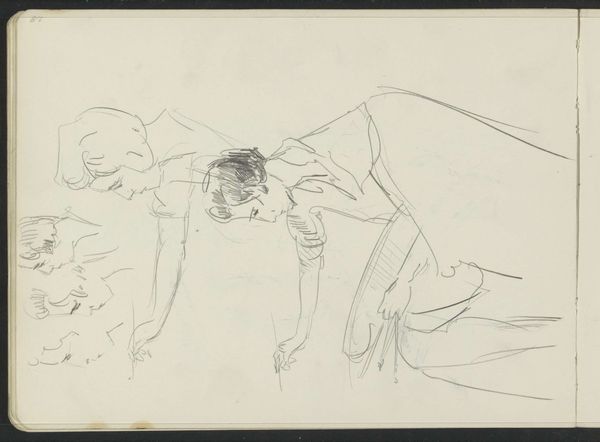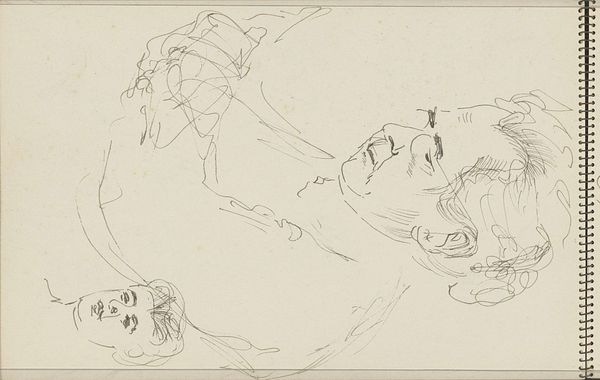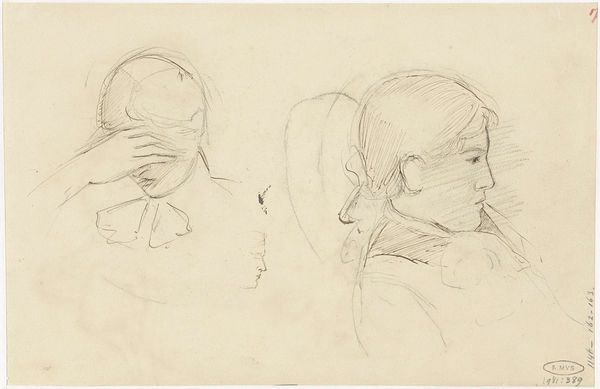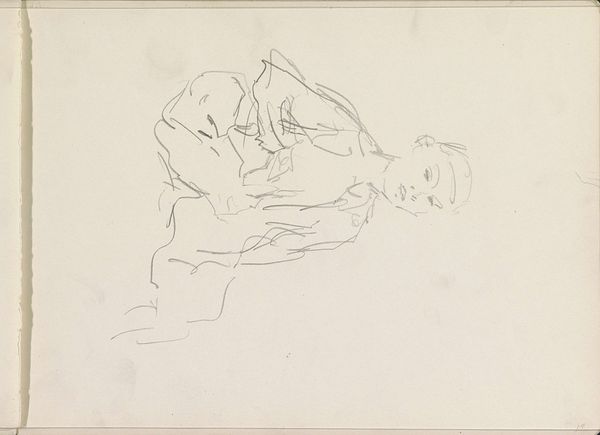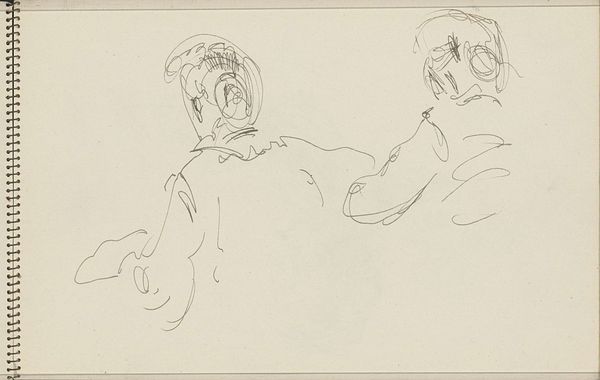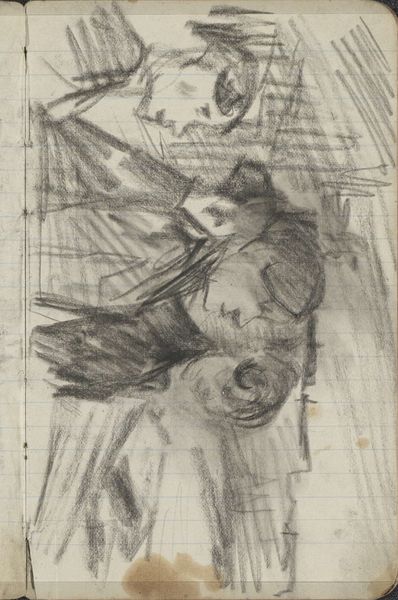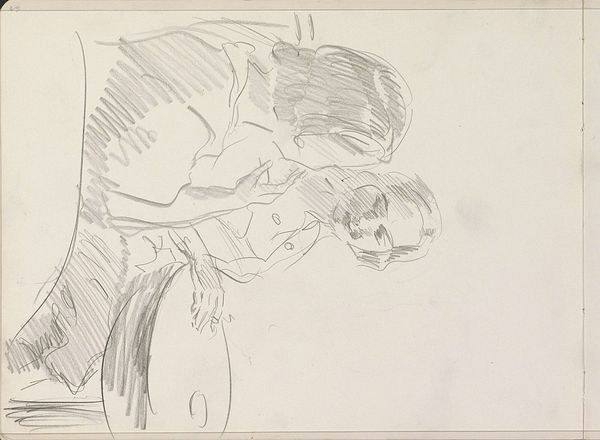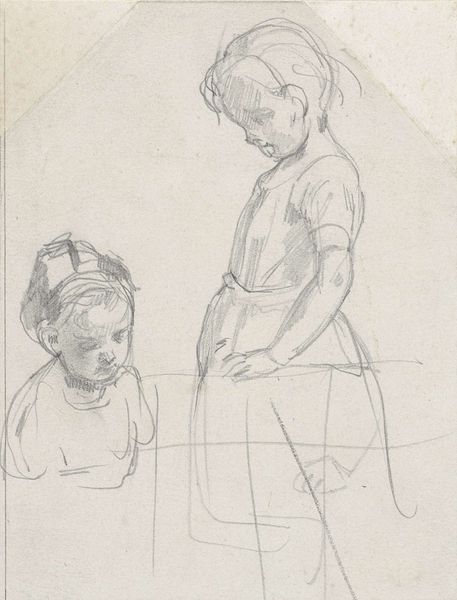
Copyright: Rijks Museum: Open Domain
Editor: So, here we have "Kinderhoofden," or "Children's Heads," a pencil drawing by George Hendrik Breitner, dating from around 1886 to 1923. The sketches feel so fleeting and intimate. What stands out to you? Curator: Well, let's think about the materiality first. It's a pencil drawing. Simple graphite on paper. Consider how readily available, relatively inexpensive and accessible these materials were, even then. How does that democratizing effect change our reading of portraiture, often commissioned and costly? Editor: That's interesting. I hadn’t thought about access. I guess portraits were usually for the wealthy? Curator: Exactly. Breitner, here, captures the *act* of drawing, the labor involved. He isn't aiming for photorealistic detail, which photography, readily available in his time, could produce cheaper. Instead, the lines show us the artist *thinking* and *feeling* through the medium. It is not about representing a child, but exploring form and volume using this widely used material. How does knowing that alter your view of the ‘intimacy’ you sensed? Editor: It shifts the focus, definitely. Instead of solely feeling like an intimate glimpse, it also becomes about Breitner's own exploration. Like he's practicing, trying to understand form through repeated marks, considering light, shadow, and texture on cheap material. Curator: Precisely! Breitner is playing with Realist and Impressionist ideals but without the pomp of "high art." Think about where and how he would’ve worked with such readily available means. He uses commonplace materials for recording ordinary subject matter and this becomes an act of elevating daily life to the realm of the aesthetic, of making the familiar extraordinary. Editor: I never thought I'd get so excited about pencil and paper! It makes you think about what artists can achieve with these ‘simple’ tools. Curator: Right? And understanding the social context of artistic production helps to enrich our understanding of what and who it’s really *for*.
Comments
No comments
Be the first to comment and join the conversation on the ultimate creative platform.
